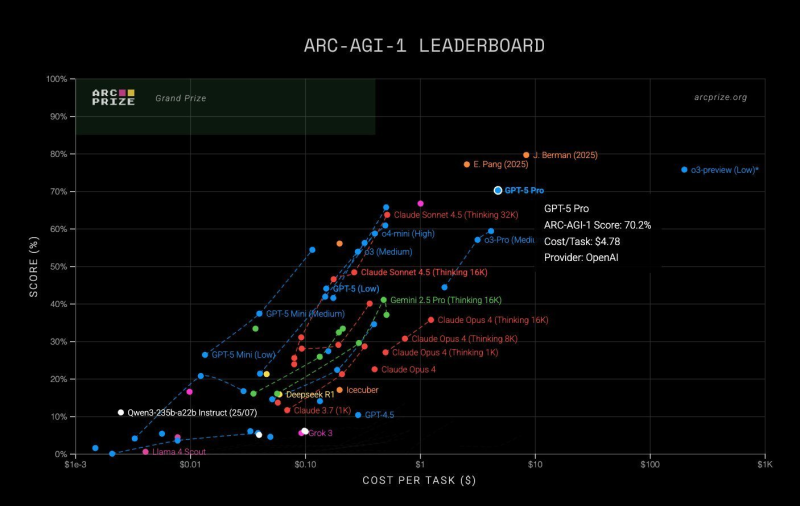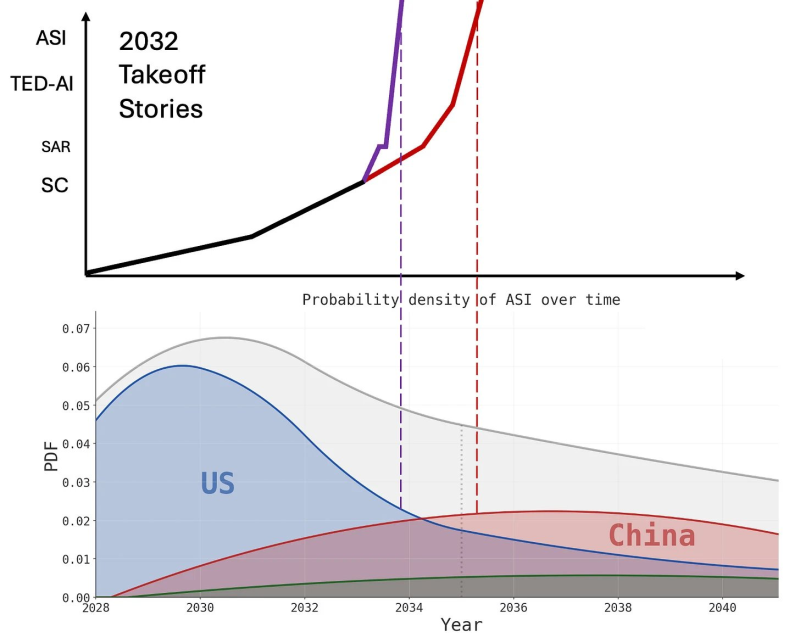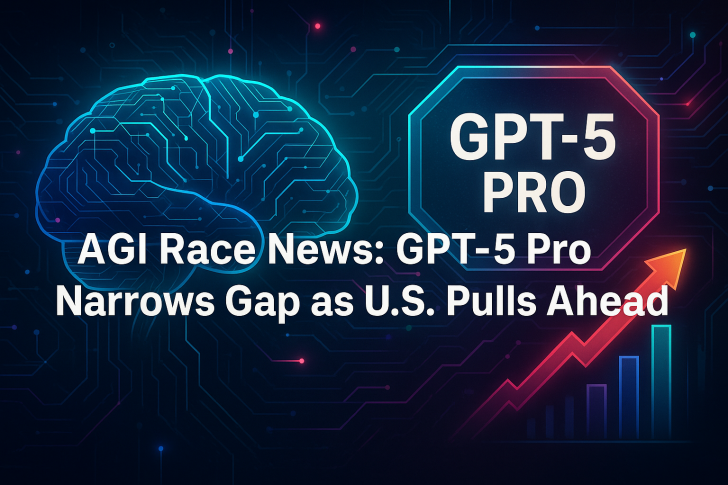● In a recent update, Zephyr pointed out the widening tech gap in the global AGI race. Only ByteDance in China has shown "meaningful progress on long-horizon tasks and multi-agent RL systems," while U.S. labs like OpenAI and Google are moving much faster. The original o3 model that hit 73% on ARC-AGI-1 ran on 20,000 H100 GPUs—compute power Chinese startups can't match given current funding and chip supply limits.

● Zephyr explained that OpenAI used outputs from this massive o3 system to create the public version through distillation. Though that distilled model "was not that great," the company has fixed the issues with GPT-5 Pro. This new model can work on a single complex problem for up to 45 minutes and nearly matches the original o3's performance at one-tenth the cost. The ARC-AGI-1 leaderboard shows GPT-5 Pro scoring 70.2% while using far less compute than earlier versions.
● Meanwhile, U.S. researchers are thinking bigger. Daniel Kokotajlo shared a colleague's "AI 2032" scenario mapping potential AGI and ASI takeoff timelines for the U.S. and China. The projections favor earlier U.S. breakthroughs, thanks to better chip access and trillion-dollar infrastructure plans. Export controls and China's limited frontier chips could push back its AGI timeline compared to U.S. labs that can deploy "hundreds of thousands of GPUs," as Zephyr noted when describing OpenAI's plans for future agentic research systems.

● The takeaway? The AGI race is speeding up, the U.S. has a growing compute edge, and models like GPT-5 Pro are getting cheaper while approaching human-level reasoning benchmarks. This suggests the U.S. is likely to reach AGI first, while China faces obstacles that may delay its timeline into the late 2030s.
 Marina Lyubimova
Marina Lyubimova

 Marina Lyubimova
Marina Lyubimova


